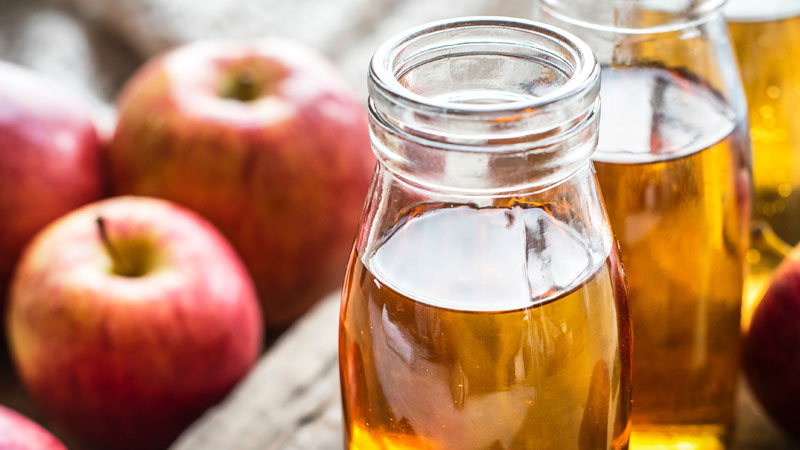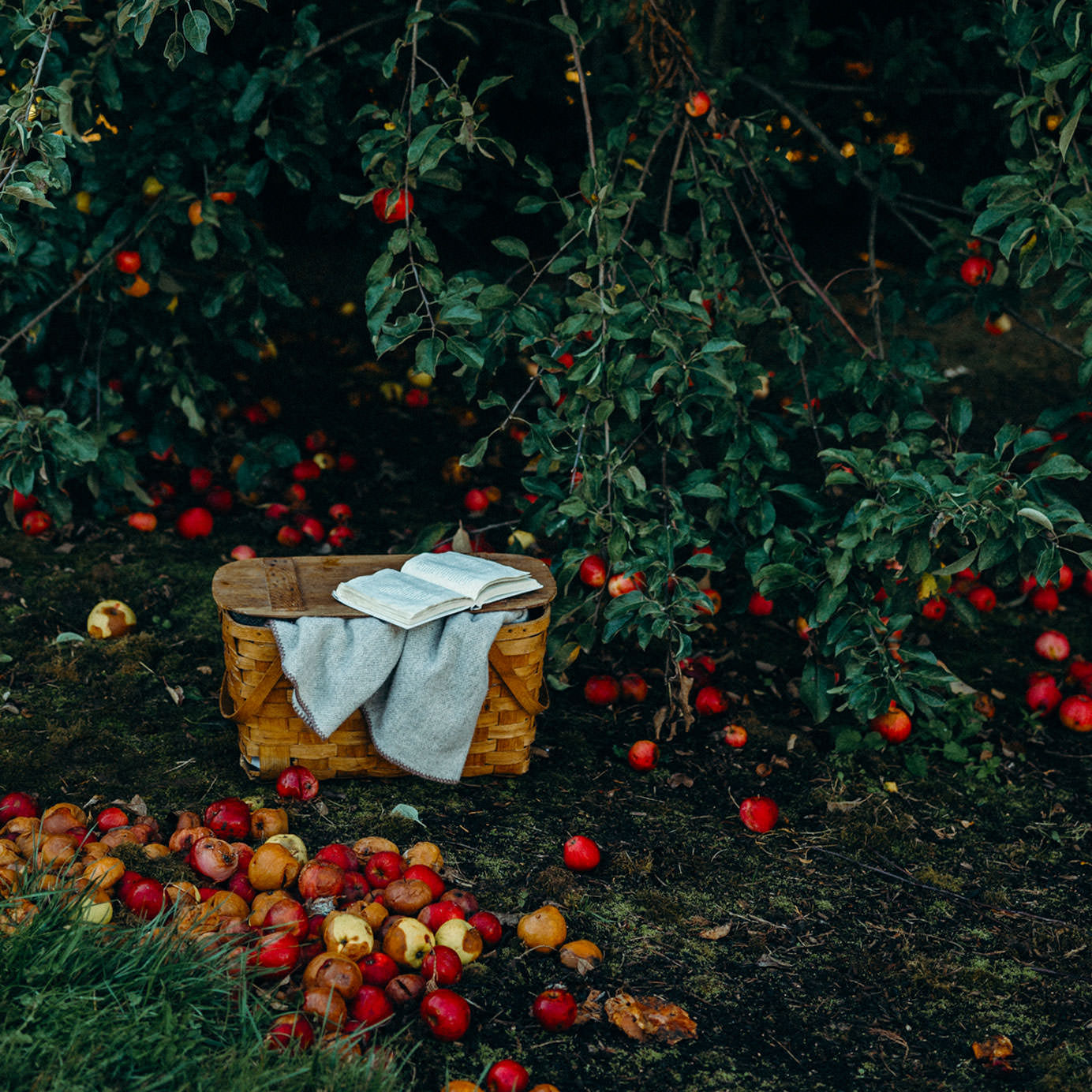American cider is currently defined by what it isn’t. Made from fruit, not grain, it isn’t beer — although it is frequently packaged in beer-sized bottles, and drafted alongside beer at bars like The Northman in Chicago or Covenhoven in Brooklyn.
It certainly doesn’t inspire the reverence or academic certification that surrounds wine, although production and fermentation methods are often similar.
Cider isn’t the next big thing among American drinkers, either. No matter how loudly lunatics like this author crowed about cider’s explosive potential back in 2014, when it surpassed craft beer growth and became a $366 million industry, it remains a subcategory. To this day, it’s common to see bottles labeled “hard cider,” demonstrating the need to differentiate a carefully calibrated boozy beverage from butterscotch-colored mugs of autumnal cheer sold at farmers markets.
“The market is still trying to figure out what cider is and what cider can be,” cider expert Darlene Hayes told Condé Nast Traveler last fall. “Wine is a legacy of the Roman aristocracy. That’s why people want it. Places that can’t grow wine grapes — Brittany and Normandy in France and Asturias in Spain — became cider cultures. That was in the U.S. until they could figure out how to grow grapes and grain.”
As beer and wine grow into billion-dollar industries that drive global trends, we still have yet to determine what cider is exactly. What does cider mean in America? And does anyone even care?
American Oxygen
Historically, American cider didn’t exist in the margins. It was our “default alcoholic beverage through the 19th century,” Annie Bystryn, founder of Cider In Love, says. “It was often what people drank instead of water.”
The proliferation of cider in colonial America was due to to a 19th century farmer named John Chapman. Better known to students of American folklore as “Johnny Appleseed,” Chapman cultivated orchards along the then-emerging western frontier of America, from Pennsylvania to Illinois.
Chapman’s orchards grew cider apples, which are smaller than apples we eat, and too tart to consume straight, according to Smithsonian. “As a member of the Swedenborgian Church, whose belief system explicitly forbade grafting (which they believed caused plants to suffer), Chapman planted all of his orchards from seed, meaning his apples were, for the most part, unfit for eating,” writes Natasha Geiling.
What’s more, Chapman planted as many trees as possible, empowered by the most American motivation there is: personal financial gain.
In the late 18th and early 19th centuries, settlers on the western frontier could qualify for land grants if they cultivated 50 apple trees and 20 peach trees in three years. This was pretty tough to pull off, since apple trees take five to 10 years to bear fruit. Chapman, a green-thumbed opportunist, would swoop in early, cultivate cider trees from seed, and sell them to frontiersmen for a profit.
Cider fell out of fashion after Prohibition. “The tastes of the nation shifted,” Bystryn says, citing an influx of immigrants from beer-drinking nations, plus the devastation of so many frontier-era cider-apple trees. “People could say, ‘That tree was made for booze!’ and cut it down as a sort of teetotaling fanaticism,” she says. It was much quicker and cheaper to turn grain into beer than to re-cultivate orchards from scratch.
Throwback Tastes
The contemporary American cider landscape spans two categories: modern, or mass-produced cider; and heritage cider, characterized by an almost obsessive attention to apple variety and terroir, plus cultivation and fermentation techniques akin to winemaking.
Heritage ciders tend to be produced in small batches, but some are widely available. Shacksbury Cider, a Vermont operation dedicated to restoring lost apple varieties, has national distribution, and Eden Specialty Cider ships nationwide via its website. Graft Cider makes sour-beer-esque ciders in New York’s Finger Lakes, and is available in six states.
Cider in Love has an Etsy-like model, connecting consumers to regional and small-batch cider producers.
“Heritage cider appeals to people who are concerned with where everything they eat and drink comes from, because you can trace different flavors to each apple variety,” Bystryn says. She also thinks cider’s versatility appeals to people who drink craft beer one day, wine the next, and cocktails on the weekend.
“People aren’t just omnivores with how they eat and drink,” Bystryn says. “It’s how we shop, and what we wear. We don’t want to be defined by one thing. Cider speaks to that. It has versatility.”
Does this mean we are approaching another cider renaissance? Maybe. But history is unlikely to repeat itself, at least not exactly.
Instead, as American drinkers become more promiscuous, sampling beer, wine, and cocktails in equal measure, cider will be another option on our shared table, as diverse and viable as any other. In America, nothing ever tastes as good as having choices.

Four Heritage Ciders to Try
Graft Farm Flor: A blend of farmhouse barrel-aged cider and wild yeast-fermented cider, Graft’s flagship is perfect for those who like fruited sour beer. Seasonal gose ciders feature ingredients like rose hips and hibiscus, and are worth seeking out. From $3.50 for 12 ounces.
Shacksbury Dry: Light and crisp, like a well-made craft lager, this widely available cider is made with heritage apples from Vermont and England. It has a slightly funky nose, dry palate, and bright, citrus-y finish. From $50 for twelve 12-ounce cans.
Carr’s Ciderhouse Wild Apple Blend: “If you love gose, try this,” Bystryn says of this funky, wild-fermented cider with a dry, tannic finish. From $19 for 750 milliliters.
Liberty Ciderworks Manchurian Crabapple SV: Hailing from Spokane, Wash., this off-dry cider is made with Manchurian crabapples. Bystryn compares its tannic structure and viscosity to Port wine, saying, “it’s really complex.” From $15 for 375 milliliters.
